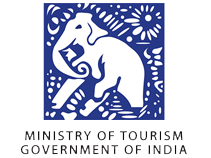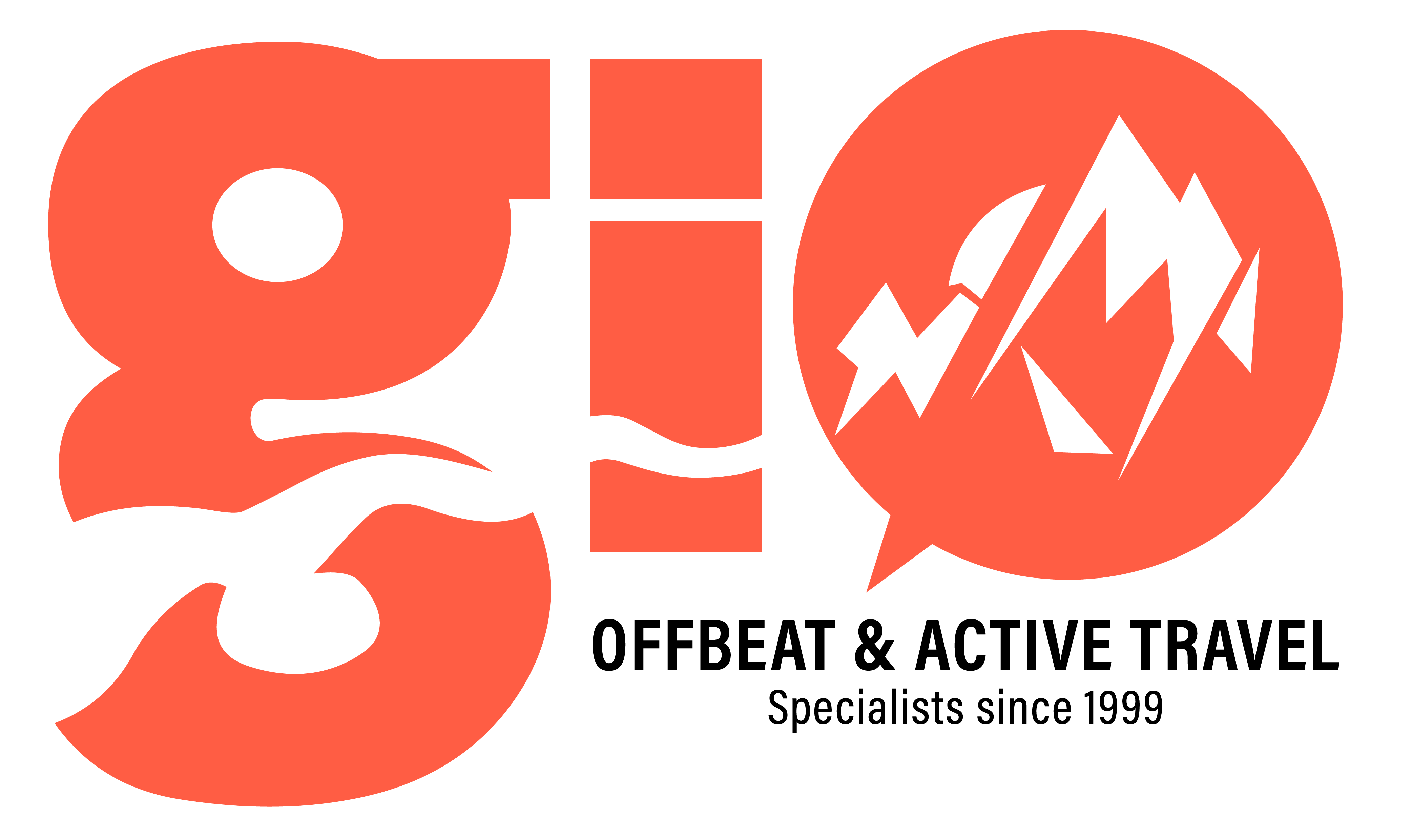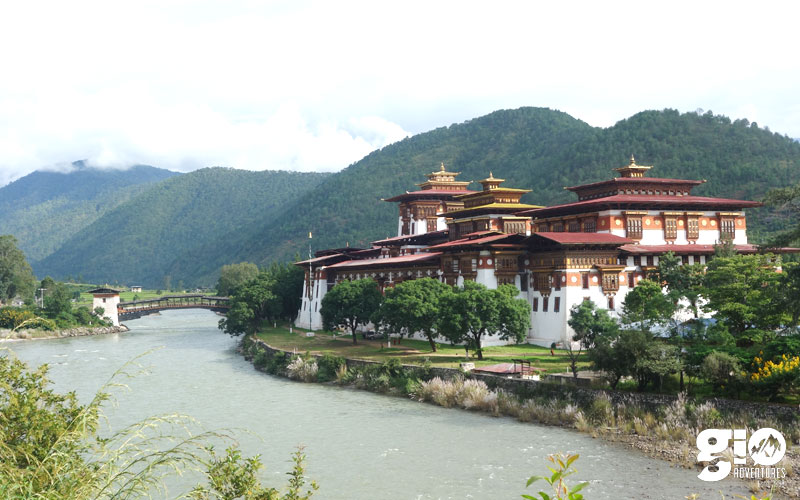- +91-7895979211, 7895979208
- LOGIN

EXOTIC & EXCITING FAMILY ADVENTURES IN THE LAST SHANGRILLA
- Region - Uttarakhand
- Base Camp - Paro
- Duration 8 Days
- Altitute 2195m
- Stay Rooms/Tents
- Difficulty Easy
Detail itinenary
Arrive in Paro and spend your day resting. Overnight in hotel/ guesthouse.
Today is a special day as you hike up to one of the most famous sight & monastery in Bhutan, Taktsang (Tiger Nest) monastery. After an early breakfast we take a short drive to the starting point and from there take a hike to the Taktsang Monastery. Guru Padmasambhava or Guru Rimpoche did his meditation here for 3 months. The hike takes about 3 - 4 hrs (both ways) depending on the capability of the hikers. This is also a photographer’s delight; the monastery is adorned with prayer flags and the stands in the cave of granite rocks 300m above the valley floor. Tea/Coffee will be served in the viewpoint cafeteria. We finish the trek and on the way back to the hotel visit the Kichu monastery which is one of the oldest monasteries in Bhutan built in the 7th century by the Tibetan King SongstenGenpo who built 108 monasteries around the region with the last being Lhasa in Tibet. In the second half today we try our hand at Bhutan’s national sport, archery and also enjoy dart shooting in an archery range. Overnight in hotel/ guesthouse.
After breakfast we get familiarized with our cycles and after a short practice run we ride on the road leading to DrugyalDzong at the end of the Paro valley. This ride will be of around 18kms and is mostly on moderate incline which even first timers can manage. There will be a back up vehicle for keeping the cycles just in case someone doesn’t feel like riding. This is a fantastic ride mostly along the Parochhu (river). We will spend some time in the ruins of Drugyaldzong and later set out on a hike inside JigmeDorji National Park. This is a super walk in the beautiful Bhutan outdoors. After the hike we head back to our hotel. Overnight in a hotel / guesthouse.
After breakfast we drive to another spectacular valley called the Haa Valley which is surely one of the most picturesque districts in Bhutan. We will cross the 4000m Chelila Pass which has great views all around especially of underlying valleys. Haa valley is characterized by its surrounding rugged and mountain terrain unlike other parts of Bhutan. Today we will stay with a local family in their farm house. This home stay has a truly rural feel with apple orchards and fields all around. After a short rest and home cooked Bhutanese lunch with the family we set out on an exploratory hike from Haa town to Juneydrak Hermitage. The walk is through rhododendron forest with some very nice views. You will en route cross the quaint Katsho village. Up ahead you reach a chorten that marks the entry to a Hermitage. The walk to the temple is very interesting with beautiful views back towards Haa valley from the temple. You will also be able to visit a local farmhouse during your walk and meet with the local families. Overnight in a home stay.
Early morning after tea we drive to the border village of Damthang (30 mins). This is a breathtaking drive and a great place for photography. Later return to the homestay and have breakfast. Post breakfast we enjoy a short hike and depart for Thimpu via Chunzum. We get to Thimpu and check into the hotel. Evening at leisure. Walk around Thimphu city, one of the most beautiful capital cities in the world. Overnight in a hotel/ guesthouse.
Thimpu is truly culturally and scenically blessed and today we spend time exploring it. We will visit SimtokhaDzong, Kingdom's oldest Dzong built by ShabdrungNgawangNamgyal. Visit the handicrafts emporium where Bhutanese textiles and other arts are displayed and can be purchased, memorial Chorten, built in the memory of Third King of Bhutan. After lunch we relax for some time and later explore the small but extremely charming Thimphu city and the curio shops around the city. We also visit TashichhoDzong, Thimphu's most impressive building situated at the banks of Wang Chhu. It houses the King’s Throne room and it is also the summer residence of the Chief Abbot. Overnight in a hotel/ guesthouse.
After breakfast we drive towards Punakha via the Dochula Pass (3150 m). We take a break here for tea/coffee and some great views of the Eastern Himalayan Mountains. From here we continue towards Punakha. Depending upon the river conditions and the experience / inexperience of the group we will either raft on the Pho Chu or Mo Chu. The stretch on Pho Chu is approximately of 16 kms with about 15 rapids of class 2-4. It is the most popular river for rafting in Bhutan. Stretch on the Mo Chu river is of 10 Kms and has around 10 rapids with 2-2+ grade. We have lunch post river rafting and then set out to explore the PunakhaDzong (fortress). Punakha used to be the capital of Bhutan between 17 - 19'th century. The PunakhaDzong (fortress) is surely the most spectacular Dzong in the country and is built between two rivers known as "Phochu" (Male River) and "Mochu" (Female River). This is the winter residence of Bhutan's spiritual leader, the Head Abbot, and the Central Monastic Body. Later drive back to Thimphu for overnight stay in hotel/ guesthouse.
Post breakfast; head out for your onward destination.
Trek Detail
Bhutan is undoubtedly the most exotic region in the entire Himalayas. What sets it aside from the other Himalayan regions, other than its stunning landscapes, is the presence of an extremely rich culture & the beautiful & ever welcoming people that inhabit this land. The experience Bhutan presents is magical, very different from anything else and one which lingers on for a long period. Everything here has a past and an interesting story around it. So for people who love mountains and the stories that have existed within these mountains for centuries, this is a perfect destination.
One visit to Bhutan and the word Lush Green would have a completely different meaning for you. Just six hundred thousand people within its boundaries and a culture which loves conservation has ensured that the forests and foliage is absolutely untouched and pristine. The land is blessed with several high valleys characterized by vast flat undulating meadows which play host to quaint villages. The wide valleys here are something very rare in other regions of the Himalayas.
This multi activity cultural exploration trip to Bhutan is a unique combination of cultural exploration and a variety of engaging activities thrown in to keep the excitement level high throughout. This is an intoxicating 8 day trip and covers the popular Paro, Haa&Punakha valleys in Bhutan. Within these valleys lies a treasure of culture, beauty and mystery. We explore these valleys on foot, on cycles and on a raft. As part of the trip we hike up to Bhutans most famous sight and monastery, Taktsang or tigers Nest. We visit 3 majestic Dzongs (forts) in Thimpu, Paro & Punakha& also explore the beautiful towns of Thimpu&Paro, which surely are the most beautiful Himalayan towns across the Himalayas. As part of the tour you get to stay in a local farm based home stay and experience the rural Bhutanese life at close quarters. We have included archery and dart shooting in the trip for you to experience the two most famous activities in Bhutan.
Departure Dates
Departure Dates
Reviews
PAYMENT TERMS & CONDITIONS
- All payments for the trips, transfers, porterage, etc. should be made in full before the trip starts.
- Cancellation Policy: In the event that you need to cancel your booking due to any avoidable or unavoidable circumstances:
- We must be notified of the same in writing. Cancellation charges will be effective from the date we receive the request in writing. Any cancellation sent on a Sunday or any National Holiday(s), will be considered on the next official working day.
- Payment for this trip will not be adjusted towards any future trip(s)
- In the event of any cancellation(s) after trip commencement, there will be no refunds and any costs incurred due to this cancellation will be borne by you.
- Irrespective of when a trip is booked, the above condition will hold true
- Cancellation charges will be as follows
- >45 Days: Full refund (after deducting any expenses that have been incurred for hotel bookings, transport, etc.)
- 30-45 Days: 75% of trip cost will be refunded (after deducting any expenses that have been incurred for hotel bookings, transport, etc.)
- 15-30 Days: 50% of trip cost will be refunded (after deducting any expenses that have been incurred for hotel bookings, transport, etc.)
- <15 Days: No refund
VITAL INFORMATION
WEATHER DETAILS
This snow trek is organized between Dec & mid-March when the region has had good snowfall. Contrary to the popular belief winters is a good time to be in the mountains if one is equipped properly. Most locals inhabiting higher reaches of the mountains don’t mind the problems associated with snowfall and seem to have a good time during these months. Also there are lots of local festivals in these months. In these months weather is generally clear most of the days. Day time is normally pleasantly warm with one getting to enjoy sitting out in the sun. Temperature would be around 12-17 °C. Evenings are quite cold and one would need to be inside a tent/room or sitting outside next to fire with proper winter clothes. The evening temperatures will be around – 3 to 5 °C. Nights can be very cold with temperatures in the range of – 8 to 0 °C.
Please keep in mind that the above information is not exact and does not account for sudden changes. Whatever the temperatures and conditions rest assured we will be prepared to handle it with ease as we use equipment of very high specifications.
LIST OF ESSENTIALS
It is very important for this adventure trip that you need to be equipped properly and with a bit of back up. Mountain/adventure travel requires one to be adequately equipped with the right kind of personal gear. Since one is travelling in the wilderness there will be hardly any opportunity to buy anything once you hit the trail so we urge you to carefully pack everything into your bags.
- T-shirts (Full) – 2/3
- Warm shirt/light micro fleece pullover/full sleeve T shirt
- Trekking Pants (water resistant/repellent & having inside lining for extra warmth) - 2
- Windproof/water resistant outer shell (jacket) of good quality (no flimsy wind cheaters please!) with a proper hood
- Down jacket with min 600 fill power rating
- Thick Fleece / Full-sleeve Woollen sweater
- Thermal inner wear (upper & lower)
- Woollen cap (Balaclava)
- Inner fleece gloves
- Outer water proof gloves
- Thick woollen socks & regular socks (4 – 5 pairs)
- Scarf/muffler (optional)
- Comfortable waterproof (Goretex) Trekking/Hiking shoes (shoes with a thick sole and high ankles are recommended)
- Camp shoes (these can be easy to slip in sneakers/sport shoes)
- Gaiters
- Raincoat / Poncho
- Small light weight towel
- Insulated water bottle & hydration pack (optional)
- Cap / floppy hat to keep the strong sun away from your face
- Sun glasses with UV protection and ability to cut the glare (imp when traversing through snow)
- Sturdy walking stick / Trekking pole
- Sunscreen Lotion
- Lip Balm
- Torch / Flashlight (with extra batteries)
- Medicines, if requiring any specific medication
- Personal toiletries
- Book, if you like reading
- Day pack/small bag which you will carry on your back every day and keep your essentials in it
- Carry rain cover for your bags
- Keep a few poly bags or waterproof bags in your bag in which if required you can put your belongings in case of heavy rain
- Camera if you like (with fully charged batteries)
- …LOADS OF ENTHUSIASM!! AND A PLEDGE TO LEAVE NO TRACE
Carry your stuff in a duffel bag, soft shoulder bag or a rucksack. Avoid suitcases, trolleys or any other hard luggage. As you will be walking long distances carrying a rucksack, avoid bringing unnecessary items on the trek. Please avoid carrying expensive watches, jewellery and electronic items on the trek.
NOTE: In case you are planning to put your bag on a mule or taking a porter please get a duffel bag or rucksack and keep it in mind that there is a possibility that the bag at times might brush against a rock or a tree and get slightly damaged so don't get very expensive bags. Also in case of damage we shall not be held accountable.
TRANSPORT OPTIONS (DELHI – DEHRADUN – DELHI)
For travel to Dehradun/Haridwar/Haridwar, one can choose between air, rail & road. For air travel, the closest airport is the Jolly Grant Airport (Dehradun) and is well connected to Delhi and other parts of the country by Air India, Jet Airways, GoAir & Spice Jet. Train travel is highly recommended with enough options being there. For train details, you could log on to www.indianrail.gov.in and for online railway ticket bookings you could log on to www.irctc.co.in.
There are frequent Public Transport buses including Volvos available from Delhi to Dehradun that cost about Rs. 300 - 800 per person. These buses depart from Delhi ISBT every 30 mins to 1 hr or so and take about 4/5 hrs to cover the distance. The same is also applicable on the return journey. A private vehicle could also be arranged for if you require the same.
OUR TREKKING CODE
We are mountain lovers and have pledged to bring no harm to them in our pursuit of running organised wilderness travel in the Himalayas and seek your assistance too in this regard. We are more than convinced that one can have more fun on a trip if we go about it in a way that no harm is caused to the ecology. In this regard we have a set of guidelines that we adhere to based on the tenets of 'Leave No Trace' & 'Tread Light' policies. These guidelines are very simple and emphasise on travelling in small groups, better planning, understanding impact of camping, proper waste disposal, respecting local cultures, sensitivity towards wildlife and so on. We have a complete section on our trekking code in the 'GIO trekking Manual'. This manual will be couriered to you once you confirm a trip with us.
ACCLIMATISATION & HIGH ALTITUDE SICKNESS
This is one of the most important aspects of traveling in the high Himalayas and cannot be ignored or set aside. Acclimatization basically means our body adjusting to lower levels of oxygen (rarefied air) & reduced air pressure as me move up. In case one does not acclimatize properly there are chances of the person facing extreme discomfort and this can be fatal in extreme cases. While there is no set route to getting properly acclimatized there are general precautions and steps that one can take to initiate good acclimatization. Our trekking guides will assist you with these steps and also once you book a trip with us the 'GIO Trekking Manual' which will cover this aspect extensively will be couriered to you. This is sure to help you enjoy the trek in very good shape.
SELECTING THE RIGHT TREK & TRAINING FOR IT
Most important thing is to select the right trek keeping in mind your experience or inexperience, health, objectives & ability. Our senior team people can assist you with this, so when contacting us do mention if you need guidance on this front also refer to our trek grading system mentioned below. Once the right trek is selected comes your preparation. Once you have booked a trip with us we will courier the 'GIO Trekking Manual' to you which will have a complete practice drill explained in detail.
TREK GRADING SYSTEM
We have broadly classified our treks as below:
Easy: These treks are 3 to 5 days long and involve walking for about 3/4 hrs daily. The trail on such treks is well defined but not always flat. These are great for families and first-timers
Moderate: On these treks, one is not required to trek for more than 5/6 hrs a day. Also the terrain is not too difficult. These treks are normally a week or so long. For these treks, prior trekking experience is not necessary. Very rarely on these treks would one camp at altitudes higher than 3800m. These treks are great for first-timers or for veterans wanting to go on a trail which is relatively less demanding
Moderate+: These are moderate treks with mostly one difficult day. These trails are fine for fit beginners also.
Vigorous: On these treks one can be required to trek continuously for more than a week through remote areas and at times trekking for more than 7 hrs a day. On most of these treks one has to cross passes or areas which are snow-covered and involve camping at an altitude of more than 4000m. Fit people with some kind of hiking experience & a spirit of adventure can contemplate going on these trails.
Strenuous: These treks apart from having continuous trekking stretches are at places technical and might require assistance from trip leader/guide and other staff people. All these treks have rest days in between. Also, all of them involve crossing passes or areas having an altitude of more than 4500m. First-timers are discouraged from walking such routes.
Expedition Style: These involve long walks at high altitudes at times around 6000m. Camping can also be well over the snow line and on glaciers at times. Safety ropes, ice axes, and crampons might be required on these treks. These treks are not technically very difficult but are considerably challenging. Previous vigorous/strenuous trekking experience is required.
DISCLAIMER
Great Indian Outdoors (P) Ltd. takes utmost care to ensure the safety of its clients. However, in the case of any unforeseen mishaps, Great Indian Outdoors (P) Ltd. will not be liable for any injuries caused or for loss of life. All disputes rising due to the above are subject to the jurisdiction of the courts in New Delhi/Delhi only. All participants would be required to sign an Indemnity Form before the start of the program, without which they would not be allowed to take part in the trip/program/activities.
Recognised by Ministry of Tourism, Government of India as an Approved Adventure Tour Operator



Contact Us
 GIO Adventures Pvt. Ltd
GIO Adventures Pvt. LtdDehradun - Uttarakhand
- +91-7895979211
- info@gio.in

